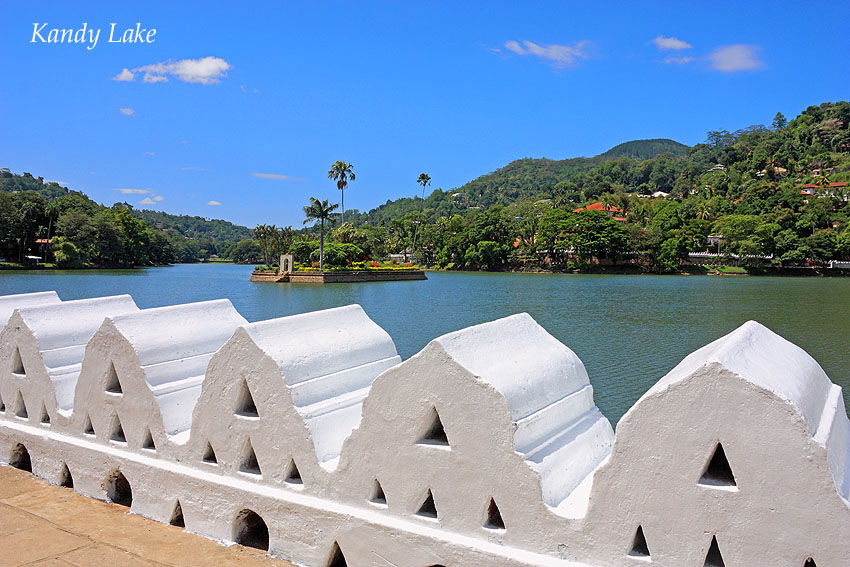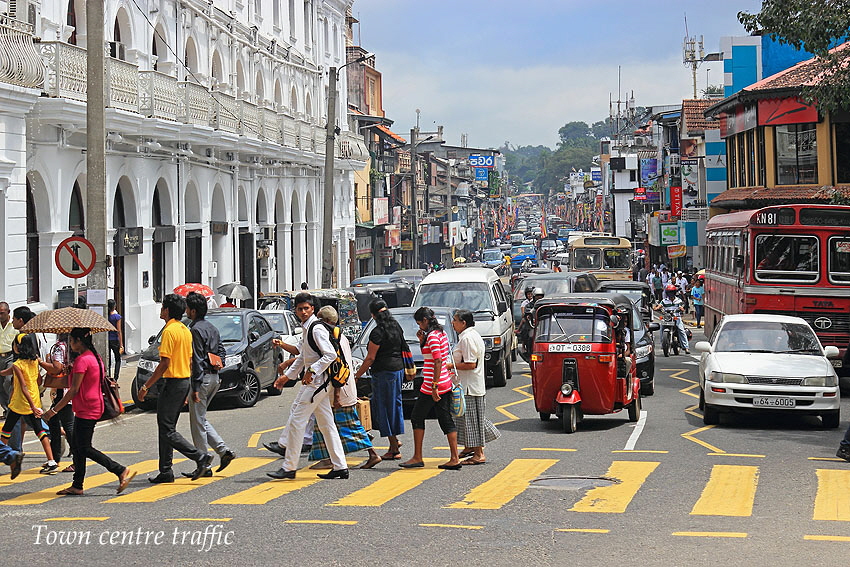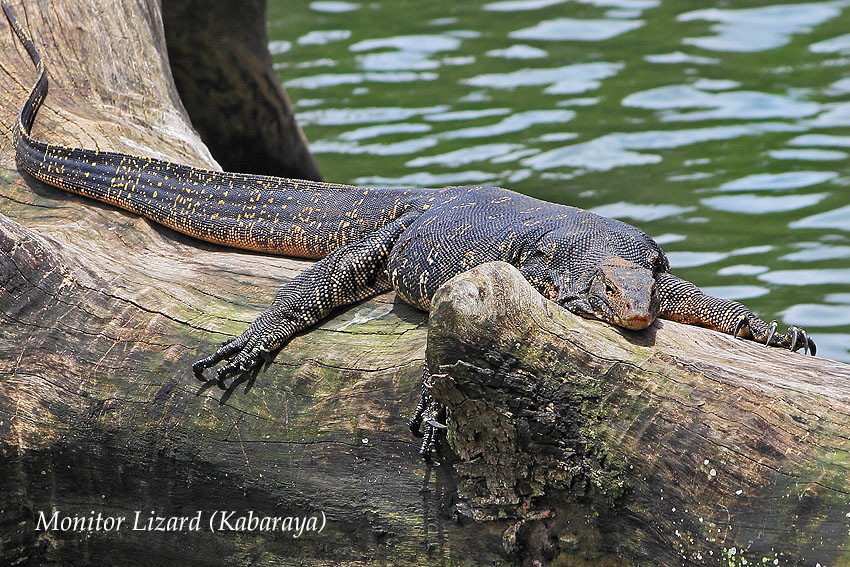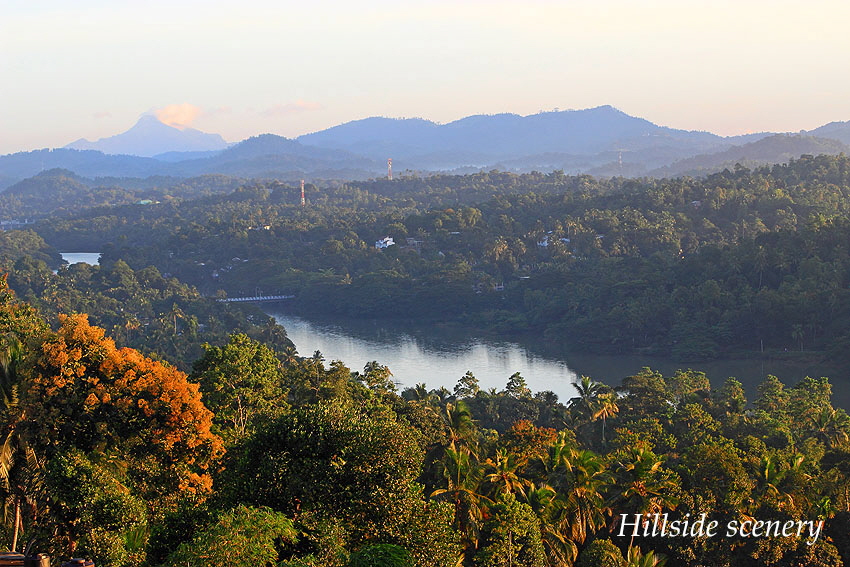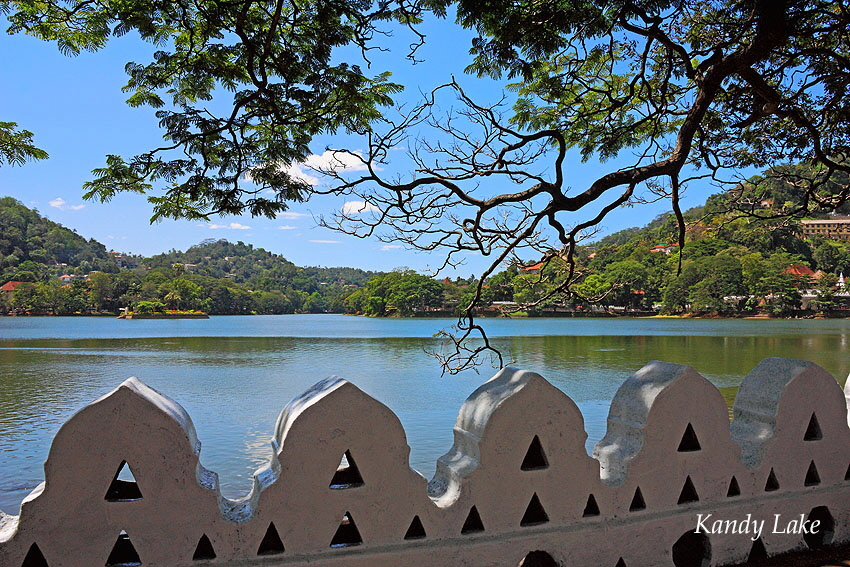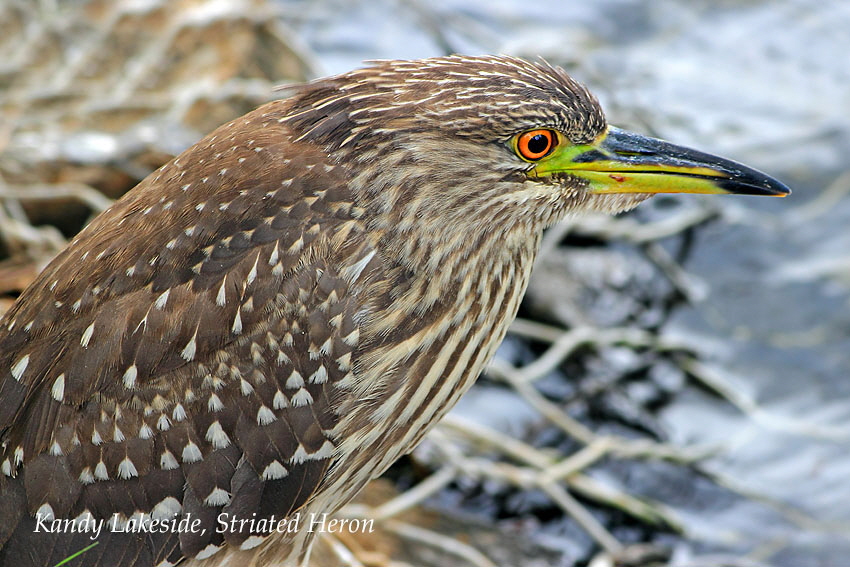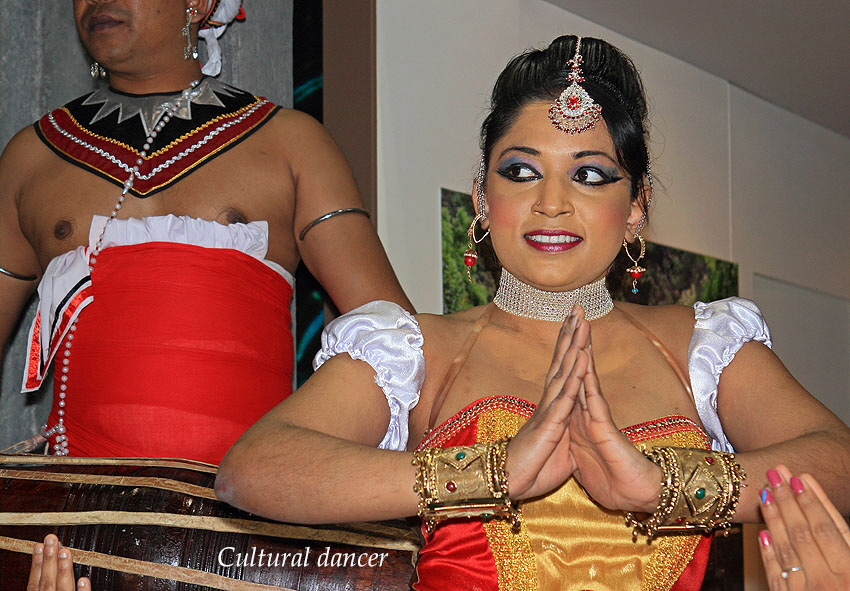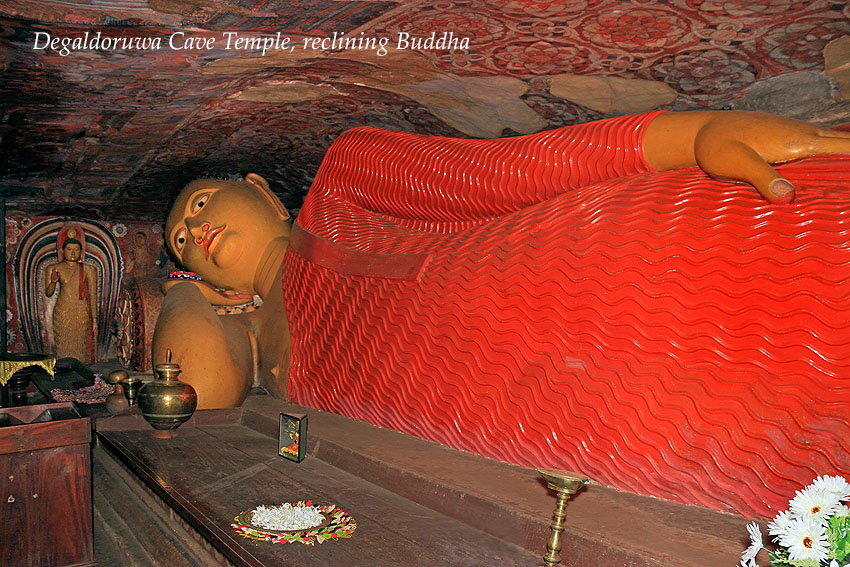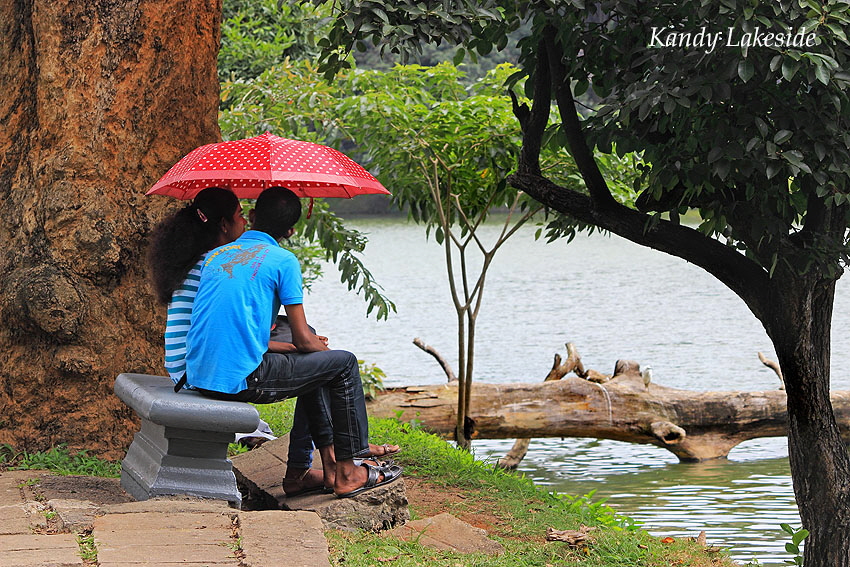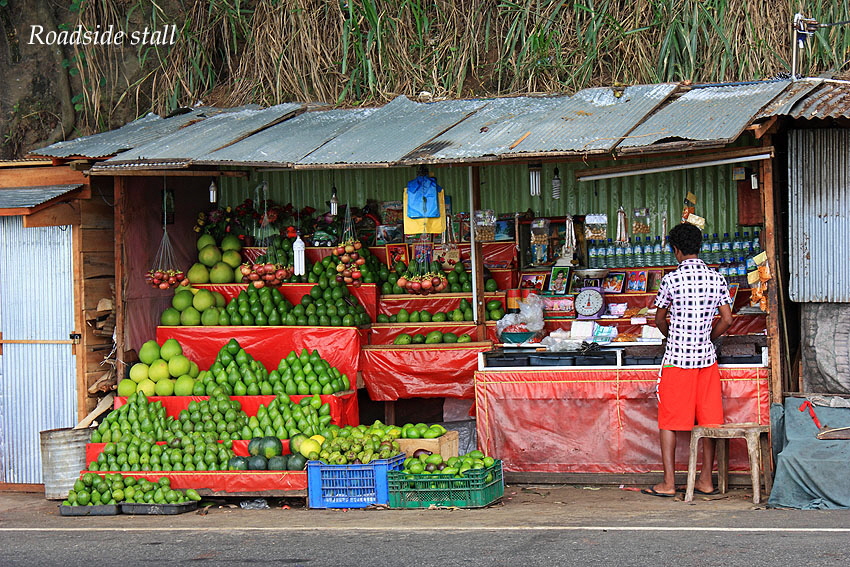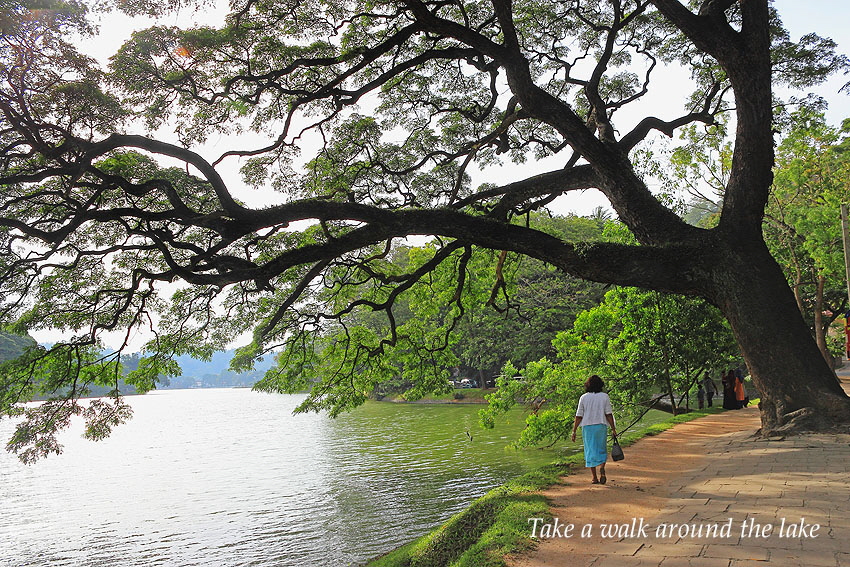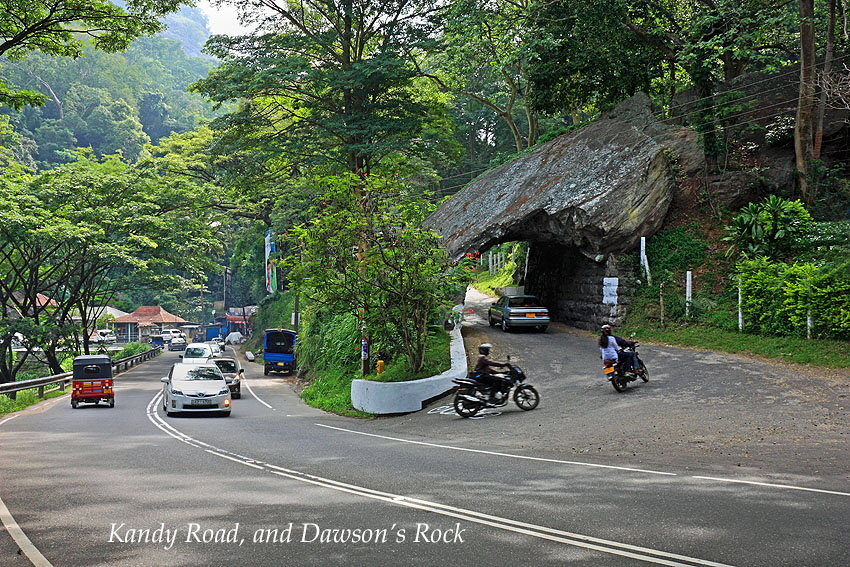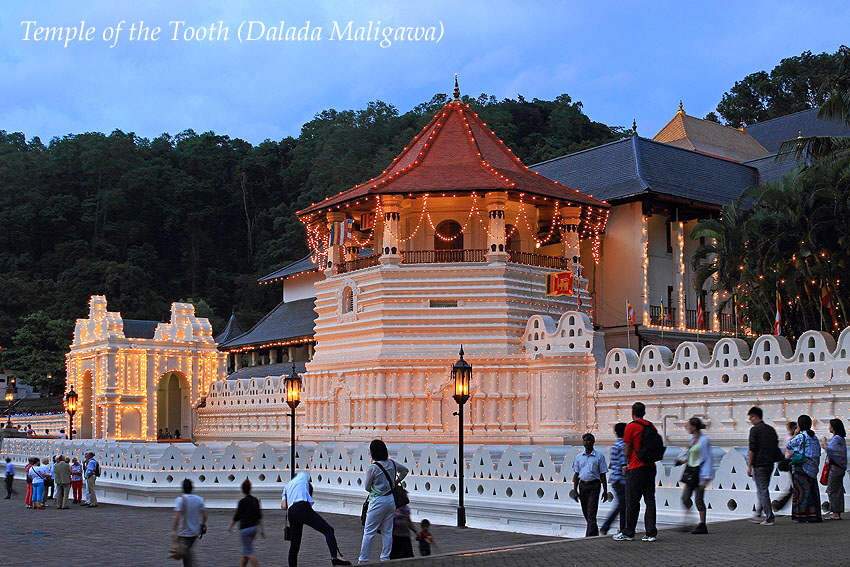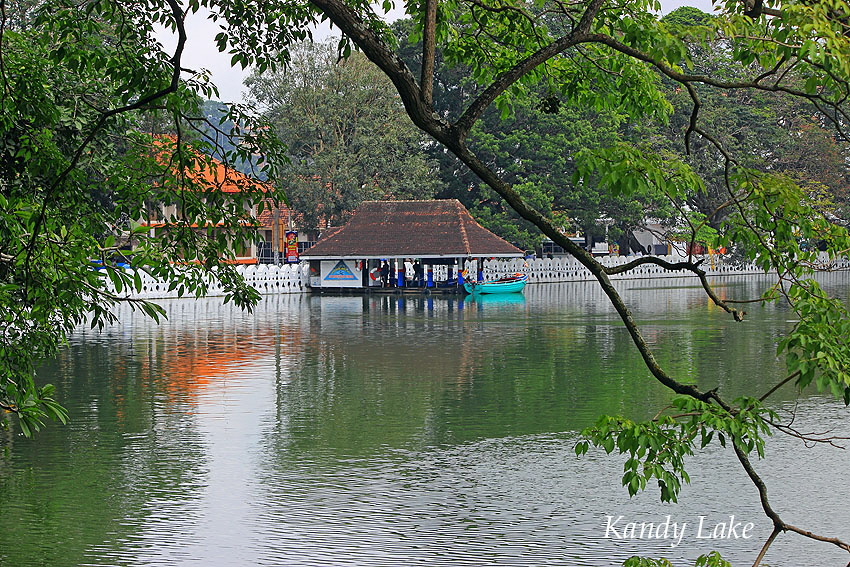
The city of Kandy or Maha Nuwara (big town) is probably Sri Lanka’s loveliest town. Located 72 miles (115km) north of Colombo, 1530 feet above sea level, it nestles on the edge of a lake surrounded by hills, jungle and lush paddy fields, at the foot of the tea country. It is a favourite upland retreat with many locals anxious to escape the sweltering temperatures of the south coast.
Apart from the capital, Kandy is the most visited town in the island and it couldn’t be more different. Not only does it lack the frenetic activity and sheer volume of people, the climate itself is cooler, less humid and altogether more agreeable than Colombo’s oppressive heat and dust. Kandy’s location, mild climate, dramatic scenery and historic sites, demand more than just a short visit.


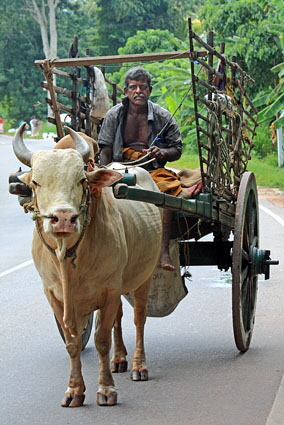
Kandy Town and lake
Traditional Kandyan dress
You can still spot an Ox Drawn Cart
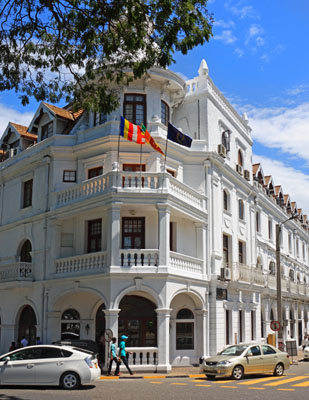
Queen’s Hotel, Kandy
Kandy has the distinction of having been the capital of the last Sinhalese kings. For almost three centuries it withstood Portuguese and Dutch invasions before finally falling to the British in 1815. It remained British until independence in 1948 as the towns many relics of the period testify. Not least among these is the Queen’s Hotel, standing in majestic splendour in a prominent position in the centre of the town overlooking the lake. Kandy maintains much of its colonial atmosphere - 1940’s cars are still a common sight on the roads while small tea shops and restaurants with names like The Olde Empire and the Victory Hotel look much the same today.
A walk around the lake is a must for all visitors. It was built by the last king of Kandy, Sri Wickrama Rajasinha, shortly before the British take-over, and is one of Kandy’s most attractive features. The small islet in the middle of the lake once contained the King’s summer palace. The two mile walk around the lake should really be done twice, once early morning (when the mist adds an elusive dimension), and the other in the evening.

A walk around the lake is a must
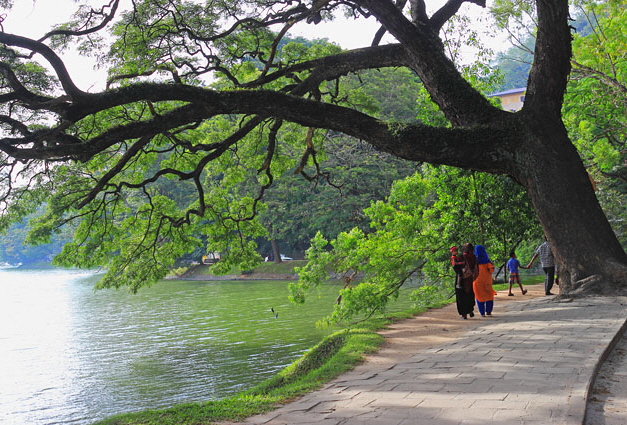

It is also an ideal spot to do some bird watching. Several species of water birds have built their nests on the trees lining the banks, and if you’re lucky you’ll find terrapins, macaque monkeys and monitor lizards (Kabarayas) resting in the shade.
Lakeside wildlife



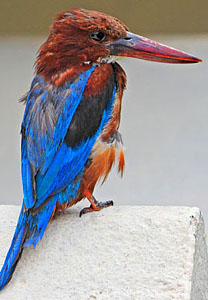

Black Crowned Heron
Star Tortoise
Macaque
Kingfisher
Monitor Lizard
The lakeside is also where you’ll find the venue for nightly Cultural Shows. Although rather a tourist trap, it’s still worth an hour’s insight into Sri Lankan arts - spectacular Kandyan dances, costumes, acrobatics, music and culminating in Fire Walking.
For a free cultural show, it’s also worth checking out the lakeside City Centre shopping mall, where there are regular open-air events. And if you must indulge in some shopping too, you’ll find island crafts like Batiks, Devil Masks, Sarongs on sale here, but at higher prices than if bought at roadside shops and markets. The Kandy Market is also a good place to see stalls teeming with colourful fruit displays.
Great Egret
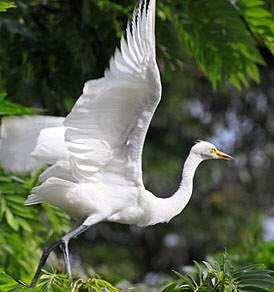
Take time to take in a Cultural Show
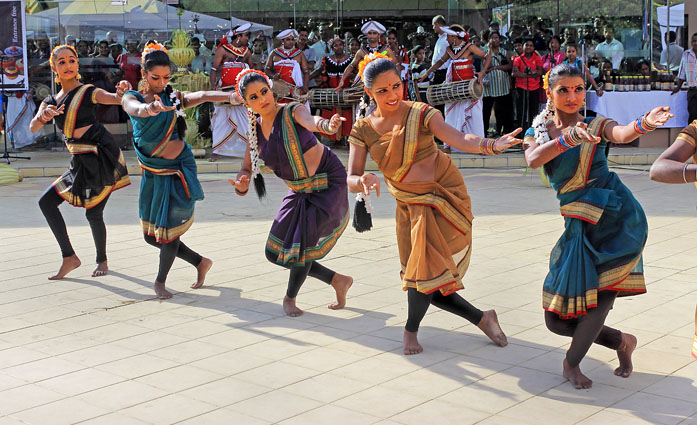
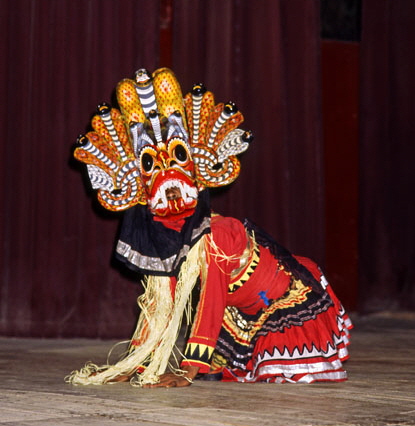
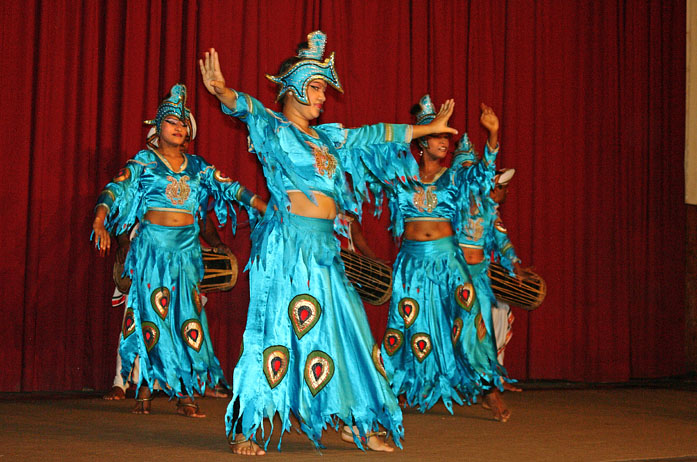

Dominating the centre of the town is the imposing Dalada Maligawa or Temple of the Tooth and is a world heritage site. Picturesquely perched on the lakeside, the pastel coloured temple resembles a fairy tale castle complete with octagonal turret and moat, lacking only a princess and a wicked witch.
Built in the eighteenth century during the reigns of the last Kadyan kings, the Dalada Maligawa is relatively modern by Sri Lankan standards. It is however the island’s most holy temple and it houses the Buddha’s sacred tooth relic, smuggled into the country after his death. Despite some accounts that the tooth was destroyed by the Portuguese during one of several brief captures of the city, devotees insist that the tooth remains safely installed in the shrine.
Kandy Market
Temple of the Tooth, in prime position, by the lake
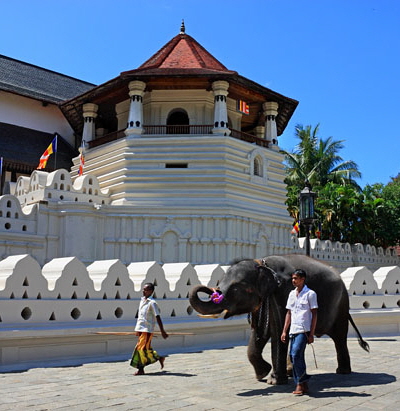

Temple of the Tooth, drummer

The relic is housed in a inner chamber of the temple. Ritual Pooja (worship) ceremonies are performed there three times daily. At the appointed time, three drummers and a lone flute player resplendent in white sarong with red sashes and white head dresses take up their positions outside the shrine room. The ornate curtain covering the doors is then removed before two priests enter the chamber as the sound of the drumming begins. The solemn, rather haunting beat interspersed with the high pitched tones of the flute continues for an hour. Meanwhile bearers rush about in what seems undignified haste, carrying oil lamps and large brass bowls full of flower offerings. In the temple compound is also the new Thai style Aluth Maligawa (new palace), a huge three storey shrine room, containing dozens of Buddha statues and paintings. Just outside the Temple site, are stalls selling colourful Lotus and Water Lily flowers for worshippers to make offerings at the temple.
Adjacent to the temple is the Royal Audience Hall, an authentic Kandyan style building containing dozens of well preserved elaborately carved teak pillars. It was here on 2 March 1815 that the historic document was signed by the Kandyan chiefs, ceding power to the British and bringing an end to the 2500-year-old rule by kings of Sri Lanka.
The town once boasted a king’s palace. Now all that remains is one building which houses the archaeological museum. The national museum is housed in the former Queen’s palace and contains much royal regalia and a copy of the 1815 treaty.
The highlight of the year is the Kandy Esala Perahara or parade held annually in July or August in honour of the tooth relic. Recognised as the most important cultural event in the Sri Lankan calendar, the celebrations continue for ten consecutive nights culminating in a spectacular finale. Thousands of colourful dancers, flag bearers, whip crackers and drummers lead a procession of over 50 elephants festooned with lights and ornate decorations in a parade through the streets. Finally a magnificent tusker bears a replica of the casket in which the tooth is enshrined.
Among the important religious and historical sites near the town are Asgiriya Monastery and Degaldoruwa cave temple. Both can be easily reach by car or Tuk Tuk (a convenient and inexpensive way to get about). Asgiriya, tucked away on one of the lush hillsides surrounding Kandy, dates from the 14th century. As in all Buddhist temples, visitors are welcome as long as they remove their shoes and can gaze in wonder at ancient paintings, and several Buddha statues, including one enormous reclining image.
Degaldoruwa is just over 4 miles from Kandy. The temple was built around the 18th century, at the foot of a huge rock. Inside, in the shrine rooms and inner chambers, you’ll find amazing frescoes and paintings showing the life of the Buddha. As it’s not frequently used as a place of worship, you can request the residing monk to open the doors, and a small donation is appreciated.
The Temple’s elaborate ceiling carvings
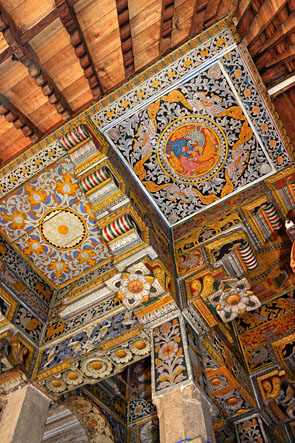
Asgiriya Monastery site
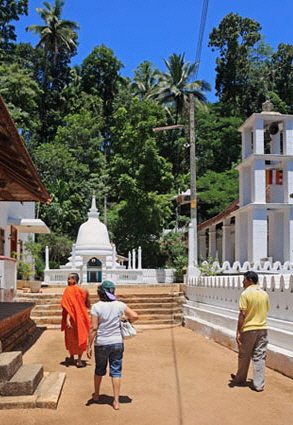
Asgiriya Monastery
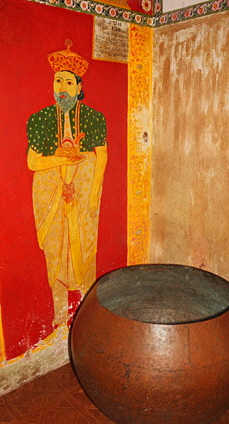

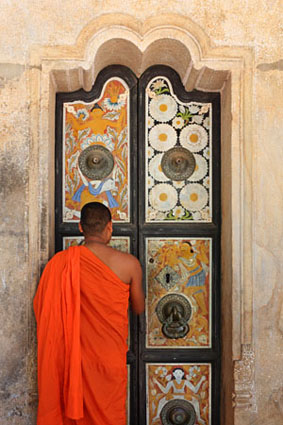
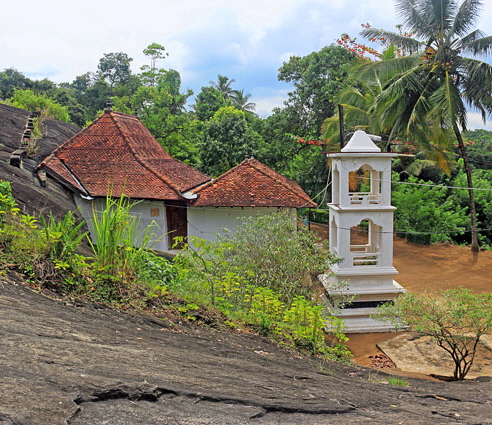
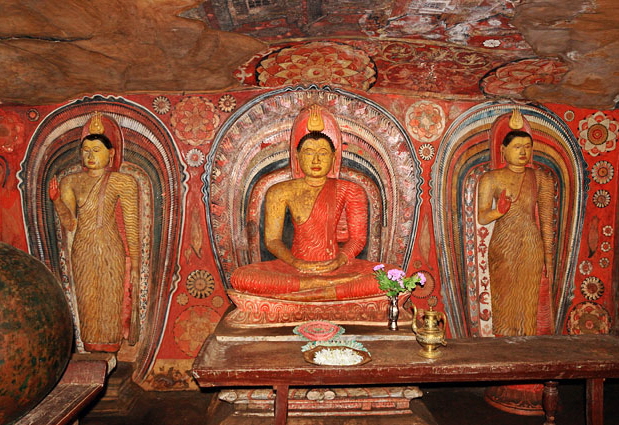
Degaldoruwa cave temple
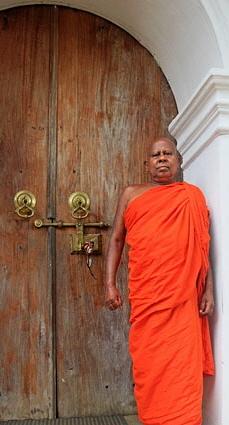
Degaldoruwa cave temple
It was once thought that Sri Lanka was the site of the original Garden of Eden. Take a look around the hills and countryside surrounding Kandy and it is easy to see why. Udawattekelle (high jungle garden) is a patch of undisturbed tropical rain forest, part of which has been turned into a bird sanctuary. There are a number of walking paths through the forest, many, like Lady Horton’s drive and Lady McCarthy’s drive are named after the wives of British governors.
For scenic views of the town and lake, take a short ride by Tuk Tuk taxi up the surrounding hills. Once there, the taxi driver will be happy to wait for you, to take you back into town. There are a couple of restaurants, where you can sit, relax and admire the scenery while sipping an ice cold Lion Lager beer. Better still, try some refreshing King Coconut water (Thambili), from a roadside stall. It is on one of these hills, that Raja Wasala Park (aka Castle Hill Park), a small public garden is perched, also offering one of the best views of the town. The park contains a Japanese gun captured in Burma during the second world war and presented to the people of Kandy by Lord Mountbatten in appreciation of their kindness when his headquarters were in the town.
Another short drive will take you uphill to the Bahirawakanda Vihara (temple) site. A steep stairway will bring you up to the huge seated Buddha statue (in meditation posture), which was constructed in the early 90’s and is 88 feet (26.8m) high. It can be seen from almost anywhere in Kandy. From here too you have beautiful views of Kandy town.
Bahirawakanda Temple
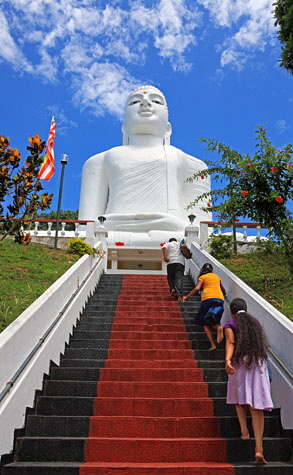
Refreshing King Coconut
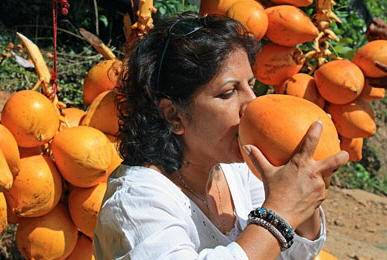

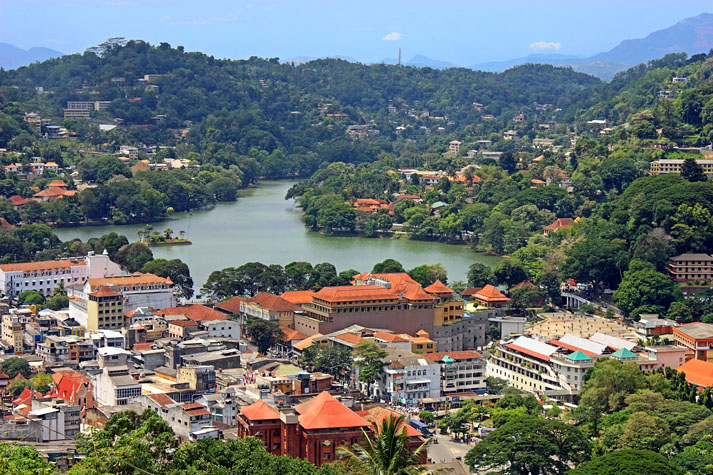
Japanese Gun
About four miles outside of Kandy, on the main Colombo road is Peradeniya Gardens, the island’s premier botanical garden, with more than 3800 species of plants and flowers from all over the world. The gardens, originally a royal residence and park, cover an area of 150 acres. They include some of the original rubber trees to be smuggled to Ceylon from Brazil, double coconuts from the Seychelles and an orchid house. A spice garden contains cloves, cinnamon, nutmeg and other Sri Lankan favourites used to add flavour and fragrance to traditional fiery Ceylon curries.
Peradeniya Gardens
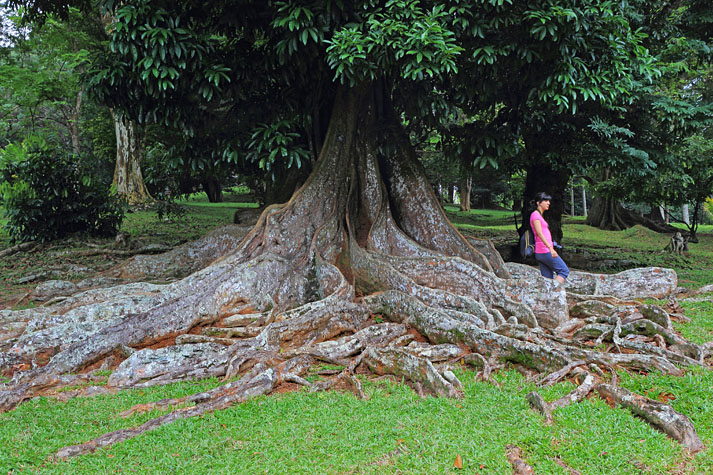
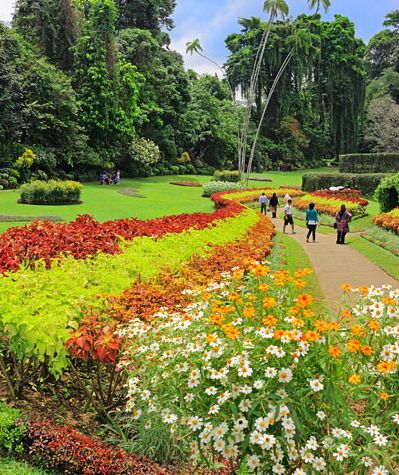
Not far away at Kadugannawa stands the Dawson memorial - a monument to Captain W D Dawson, the engineer responsible for the construction of the Colombo-Kandy road. Below the village you can see the large boulder which he tunnelled through in order to fulfill the Kandyan prophecy that the Kingdom would never fall “unless an enemy pierced the living rock”.
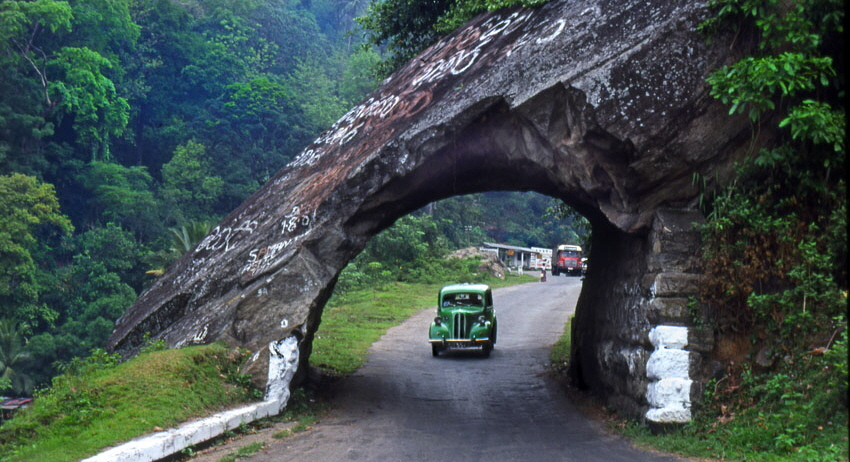
A vintage Ford passing through Dawson’s Rock
Continuing along the Kandy-Colombo road the scenery gradually changes. As the altitude drops, tea and rice terraces give way to the low country paddy fields, coconut palms and finally buildings and the evening rush hour as we return to Colombo.
28 images here ©JAYTRAVELPHOTOS
© COPYRIGHT notice. The images on this site are for viewing only.
To purchase any, for personal or commercial use, please contact us at jaytravelphotos@aol.com
____________________________________________________________________________________________________________________________________________

